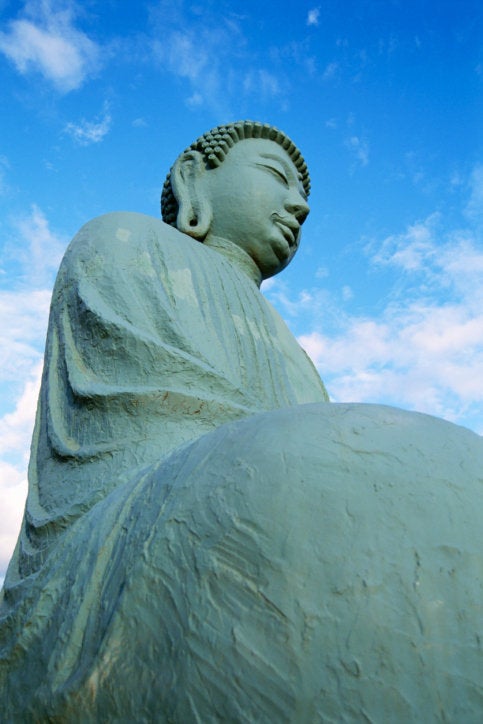
When I met my teacher, Chogyam Trungpa Rinpoche, in 1971, I felt an overwhelming sense of connection. At the time I was attending the Berklee College of Music in Boston, and studying yoga at a nearby studio. Rinpoche came to our yoga studio to lead a weekend meditation workshop shortly after arriving in this country via England, via India, via Tibet. What struck me right away about him was that he was extremely clear and totally present, not making any kind of big show or putting on any airs. He was just simple and direct, and at the same time very magnetic and intelligent.
Shortly after that first meeting, I actually quit a very good summer job playing guitar on Cape Cod to go study with Rinpoche. I had a vivid dream about him and just felt compelled to go see him. Maybe that was a different time and place, I don't know...
These days, many meditation students have questions about how to find a spiritual teacher, what criteria to use and what to expect from such a relationship. I think the mood is different than it was in the early 70's when lots of us seemed willing to just dive into something and take a chance.
Then and now, however, when we are looking for a teacher, it is helpful to have a sense of how deep into our own journey we are prepared to go. That way we will be able to choose an appropriate level of study. It is also important to carefully consider the qualifications of our teacher and the extent to which that person actually embodies the teachings being presented.
As it is presented in the Buddhist tradition, there are three stages of teacher/student relationship:
At first, the teacher manifests as an elder or preceptor. The teacher is a knowledgeable, experienced individual who presents the dharma in a straightforward and informative manner. The student is open minded, but sharp and critical in receiving the teachings, carefully evaluating what has been said, digesting the meaning, and evaluating for herself how relevant and useful the information is.
In the second level, the teacher manifests as a "spiritual friend" or mentor. Here the teacher is considered a qualified guide and companion on the spiritual journey. The relationship is more direct and is based on "eye-level" communication. The teacher has experience that enables him to understand the student's journey and is in a position to counsel, support, encourage and even give critical feedback when necessary. At this point the student's journey is becoming more personal and less theoretical, and individual advice and support are an important element in that progression.
Entering the third stage, the teacher is seen as an accomplished master whose guidance and feedback are essential. The teacher is now working very directly with the student's state of mind and helping to bring out her full capacity. If we use the analogy of martial arts, now the student and teacher are working with real weapons -- there is less margin for error. Precision and trust are essential.
Buddhist texts refer to all kinds of qualities for a qualified master, but even if you find one, without a strong personal connection between the master and the student this advanced level of training may not really be effective. It is essential that the teacher is thoroughly trained herself and completely personifies what is being presented. Sometimes the teachings at this level are called transmission or "ear whispered." The communication is very direct and powerful.
Ultimately, it is said that the real teacher/guru is actually internal -- within ourselves -- and that the inner guru, the outer guru and the student's mind come together seamlessly. At that point the student also begins to embody the teachings, and there is no longer a separation between the mind of the teacher and the mind of the student. In some of the Buddhist lineages of Tibet, this kind of direct lineage transmission from master to disciple can be traced back hundreds of years.
The analogy that is used to describe this kind of lineage transmission is that of passing on a recipe for making bread. The recipe is old but the bread is made fresh and hot each time. Respect for lineage and tradition can be unsettling for some American students, who may culturally thrive on rebellion and a fascination with whatever is new and different. With that in mind it seems that we are living through a very interesting and transitional time in the evolution of Buddhism in the West -- perhaps a new cultural hybrid will emerge. What do you think?
Follow David on his website (www.davidnichtern.com), facebook (facebook.com/davidnichtern), or twitter (twitter.com/davidnichtern).
****

David Nichtern and Cyndi Lee's DVD, Om Yoga and Meditation is available through Amazon.com.